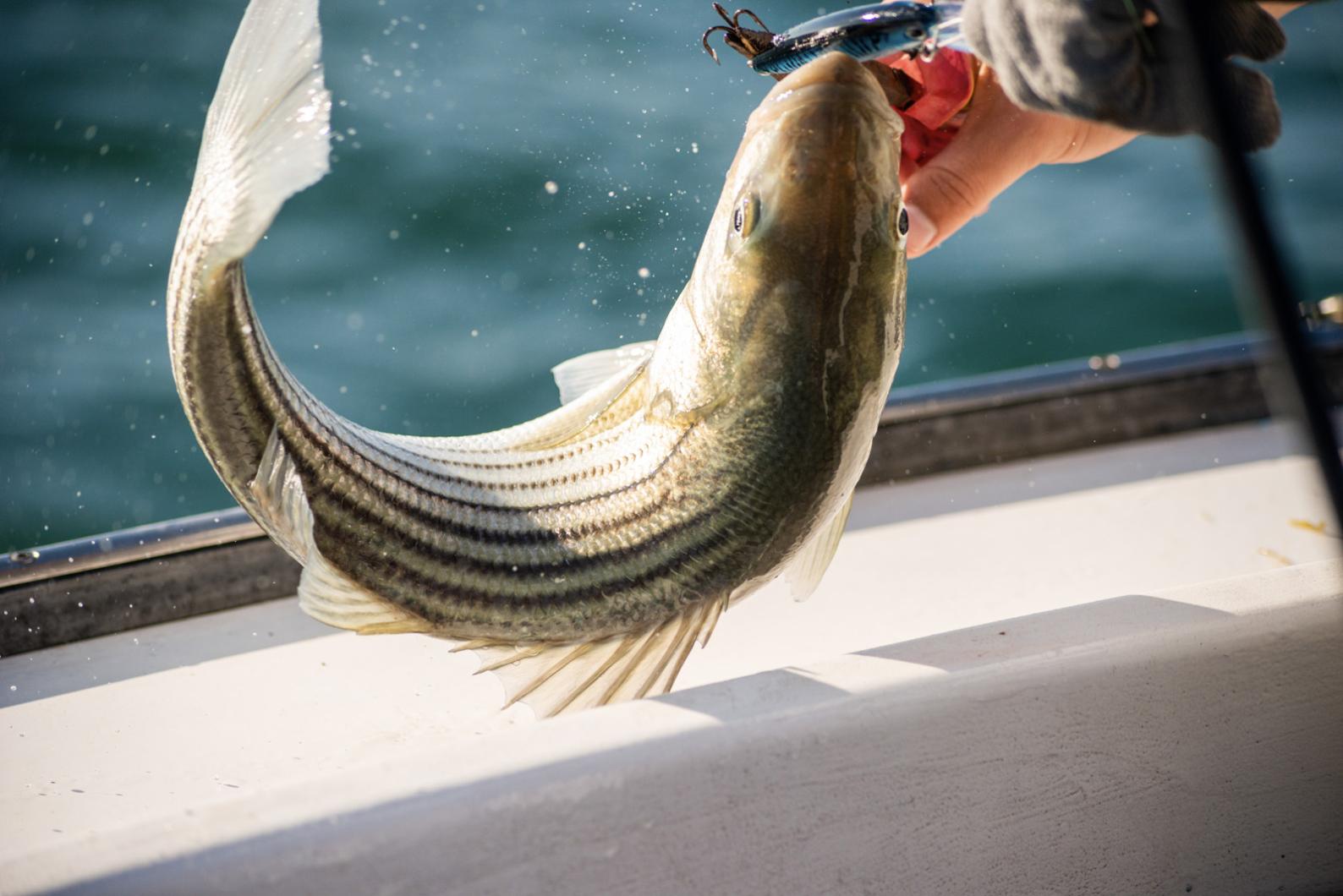Federal regulators took steps to bring the striped bass population back from the brink last month when the Atlantic State Marine Fisheries Commission voted to approve restrictions on the size of fish recreational fishermen are allowed to keep.
The new regulation makes permanent the emergency actions to protect the striper stock taken by the ASMFC this summer. Recreational fishermen will be restricted to keep one fish a day between 28 and 31 inches during the season.
“We’re putting in rules to control fishing mortality, so we have a shot at keeping this stock healthy,” said Michael Armstrong, the deputy director at the state Department of Marine Fisheries who also serves on the ASMFC.
Now that the commission has approved the regulations, state level departments will be required to put them in place.
The restrictive size limits are meant to protect the class of striped bass spawned in 2015 – the last strong spawning year from the species.
New rules voted on by the commission will also restrict the harvest for commercial striped bass fishermen, Mr. Armstrong said, reducing each state’s harvest quota by 7 per cent, or about 650,000 pounds for Massachusetts.
Despite that commercial reduction, Mr. Armstrong said, the primary threat to the species remains on the recreational side, both from the harvest and from unintentional kills that come as a result of catch-and-release.
“Coastwide, commercial only accounts for around 10 per cent mortality,” he said. “There’s just so many people fishing.”
Commercial fishermen in Massachusetts can only keep striped bass over 35 inches long, also keeping them from harvesting from the 2015 class.
Striped bass had previously been lauded as a major success for fisheries conservation. The species came close to extinction before a fishing moratorium led the species to make a recovery in the 1980s.
Since that initial recovery, though, the species has gone back into decline.
“It’s been declining for over 10 years now,” Mr. Armstrong said. “Recently, there’s been some, really horrendous, worrisome spawning out of Chesapeake Bay.”
In addition to high mortality from the recreational fishery, environmental conditions have also contributed to the fishery’s precarious position, Mr. Armstrong said. A recent trend toward warm, dry springs have affected the salinity levels in habitats, like the Chesapeake Bay, where larval striped bass thrive, further stacking the cards against the species.
“I’m worried, very worried, about our ability to even maintain the stock, even if we went to catch and release only,” he said. “The whole system has changed because of climate change.”
Regardless of the environmental challenges, Mr. Armstrong said the new regulations give the fishery the best chance to recover by the target date of 2029.
“We’re putting in rules to control fishing mortality, so we have a shot at keeping this stock healthy,” he said. “The only thing we can do is control the harvest, and preserve as much spawning stock biomass as we can.”







Comments (12)
Comments
Comment policy »